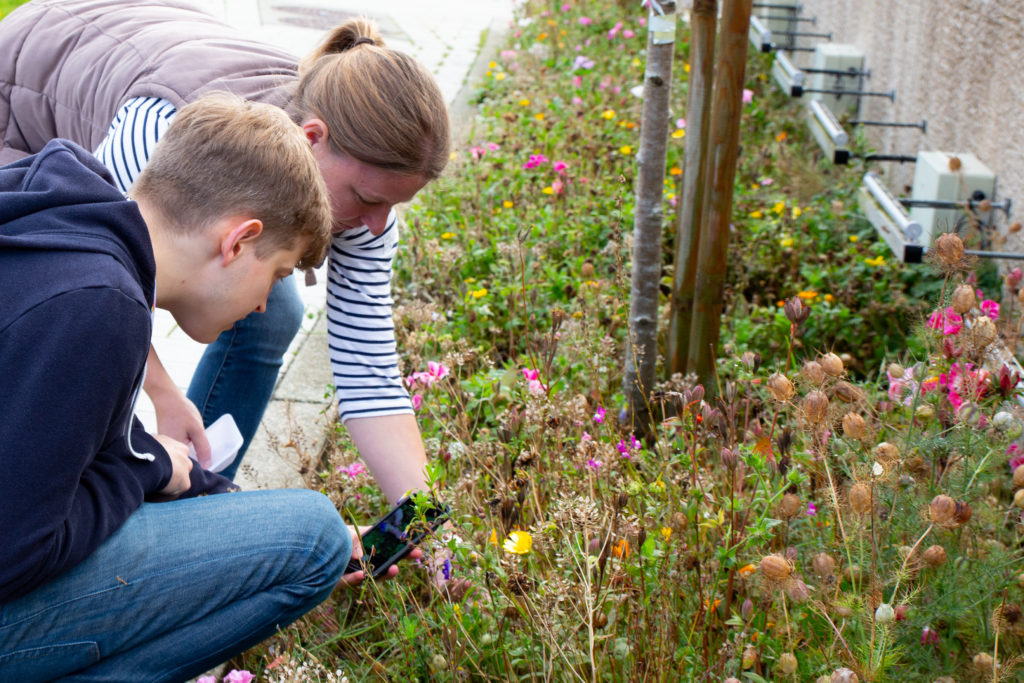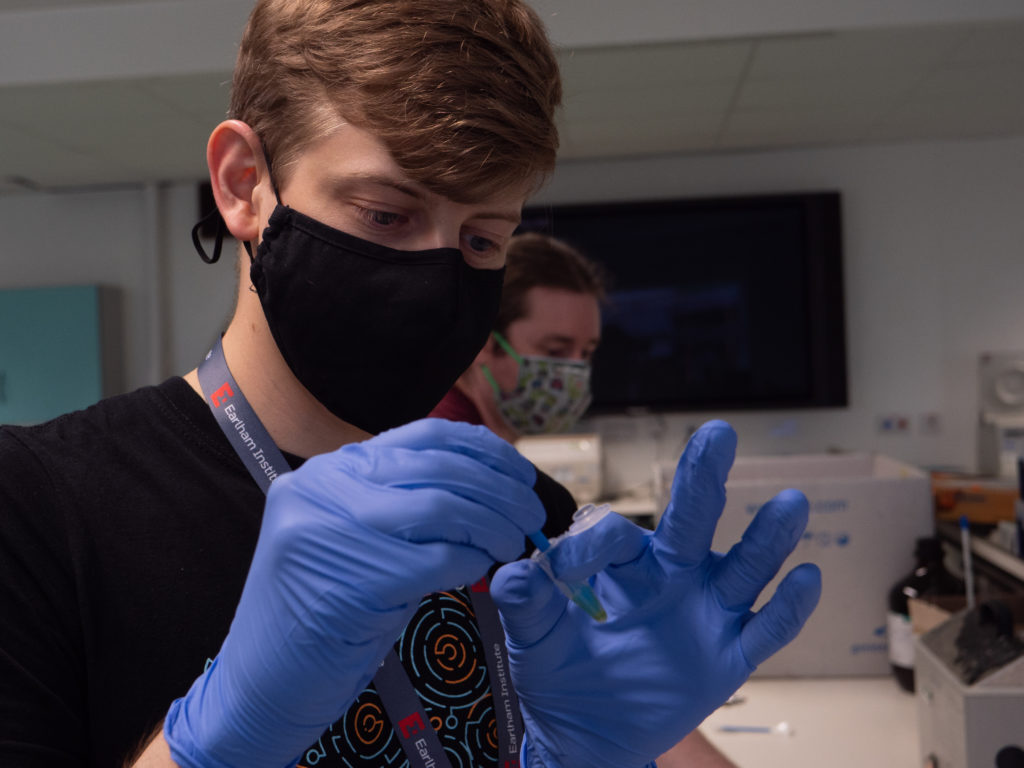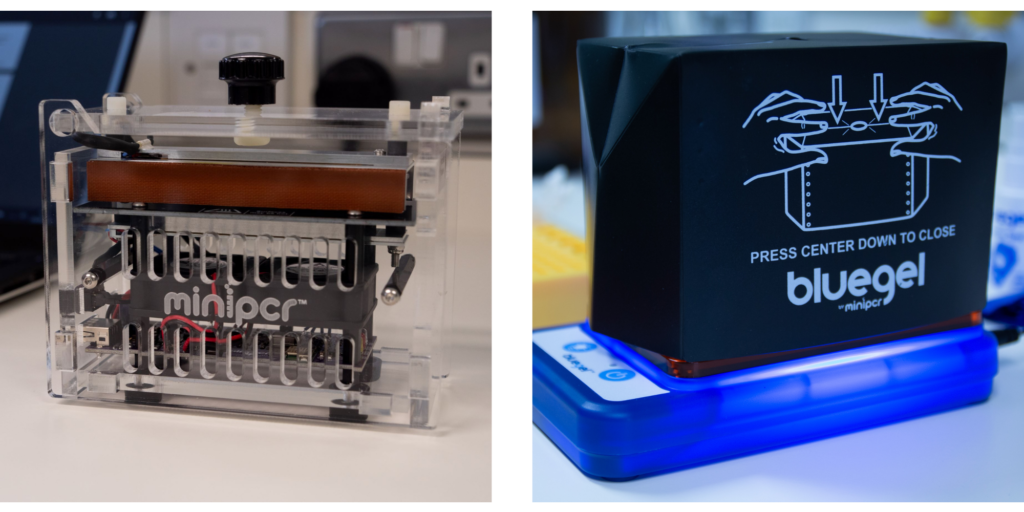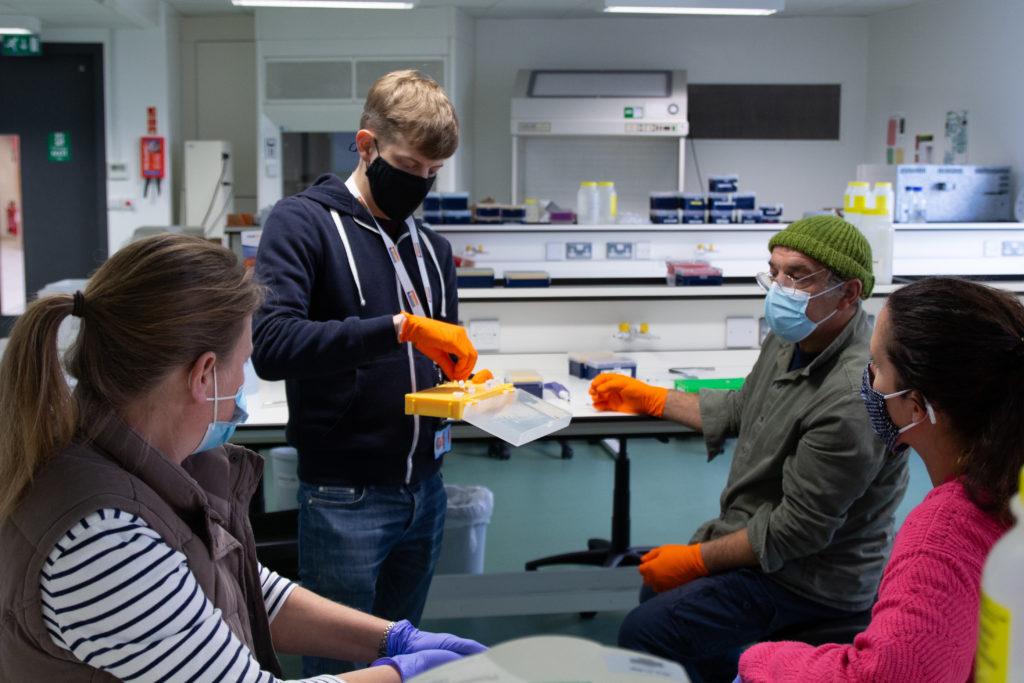
Barcoding the Broads: explore the biodiversity on your doorstep
Despite having to work around the delays and restrictions due to UK lockdowns, it’s been a productive summer at the Earlham Institute in Norwich. We’re really excited to have launched the first in-person training sessions of our Darwin Tree of Life public engagement programme: Barcoding the Broads.
With some fantastic initial feedback from teachers and nature groups, and some exciting collaborations already in place, we’re looking to spread the word about our approach to engaging the wider community with the fruits of the Darwin Tree of Life project.

Workshop Attendee, 5 October 2021
Introducing Barcoding the Broads
Exploring biodiversity in Norfolk means learning about all the living things in the place I grew up – the seals at Horsey, the rare butterflies on the Broads, the plants and mushrooms in parks, and the tiny organisms in ponds that can only be seen with a microscope.
Barcoding the Broads helps with exploring biodiversity through a technique called DNA barcoding, a powerful tool for identifying an organism by extracting and analysing its DNA. I hope, through disseminating this method, to connect people with the region’s awe-inspiring nature, and to give local naturalists the tools they need to help identify and document the organisms they study.
Analysing DNA barcodes – unique patterns of DNA within a genome – is useful for species identification because it’s relatively fast and cheap. It works alongside traditional methods where specimens are carefully analysed by experts with years of knowledge, but where it can sometimes be hard to distinguish between subtle anatomical features.
For our outreach programme, we’re sharing skills and knowledge with community groups to help them incorporate DNA barcoding into education and research projects. We’re starting this on the Norfolk Broads, an area of special ecological interest that is the UK’s largest protected wetland. From salt marshes and woodlands to mudflats and coastal dunes, there’s a wonderful variety of ecosystems to explore here.

DNA Barcoding Techniques
Our DNA barcoding methods are straightforward and reliable thanks to the huge advances in sequencing technology and the miniaturisation of lab equipment, meaning anyone can identify an organism with a bit of training and support. It opens up a new world of possibilities for appreciating the importance of biodiversity and conservation.
Even at the start of my PhD, just a few years back, I couldn’t have imagined how small and portable everything would become. For under £1,000, we can now get a miniPCR machine and gel tank / visualiser to take out to schools or onto the Norfolk Broads. The tools to do molecular science are really opening up to a broad audience.
It’s great to have this portable set up to help spread DNA barcoding across the East of England and inspire people to learn about the biodiversity on their doorstep. And our collaborators at Cold Spring Harbour, New York, have developed some clever techniques to make the DNA isolation as painless as possible. Just a drop of buffer containing chelex, a bit of crushing with a pestle and some heating in a water bath, then we’ve extracted the DNA from a plant or insect sample within minutes.

Training Workshops
Over the past few months we’ve been packaging up the laboratory and computer techniques for DNA barcoding into interactive training workshops for teachers, technicians, secondary school students, naturalist groups, science communicators and other education professionals. We’re running the workshops on the Norwich Research Park, starting with DNA extraction from plants and insects with plans to extend this to fungi samples soon.
During the workshop, we collect samples with attendees from around the building and work through some simple steps to isolate the DNA. We then run a technique called Polymerase Chain Reaction (PCR) – where millions of copies of the DNA barcode are made – and use Gel Electrophoresis – where DNA fragments are separated by size – to confirm whether the experiments worked.
After a few hours, we know if we can send off successfully amplified DNA samples for sequencing to determine the order of the A, C, T and G building blocks. We wrap up the day with an overview of an amazing piece of software called the DNA Subway that lets us analyse DNA sequences and rapidly identify the plant or insect species we collected.
So far, the training sessions have been run with members of the Norfolk and Norwich Naturalists’ Society, the education team at How Hill, and teachers from Sir Isaac Newton Sixth Form. The feedback has been overwhelmingly positive and follow-up workshops are now being planned with sixth form students and other naturalist groups.

Workshop Attendee, 23 September 2021
Get involved
DNA barcoding training sessions are now available on the Norwich Research Park to support your education and research work.
The full-day workshop provides an overview of Barcoding the Broads as well as hands-on activities that cover all the techniques for DNA barcoding – with the opportunity to discuss how it can be incorporated into your own projects. Sessions (9:30am-4:00pm) are free to attend for groups of up to eight people with full lab protocols and video demonstrations available on our website.
For teachers, technicians, science communicators and other education professions:
DNA barcoding provides an authentic research experience – asking questions, conducting experiments, analysing results and drawing conclusions – with a variety of laboratory and computer methods. It covers topics such as taxonomy, phylogenetics, biodiversity, ecology, bioinformatics and genomics, and would be suitable to share at year 10, year 11 and sixth form level.
For naturalists and researchers:
DNA barcoding can be used to support research projects that study eukaryotic organisms – i.e. those that have a cell nucleus such as plants, insects and fungi. For example, to determine whether larvae and adult beetles are the same species, to confirm the presence of non-native species in your local region, or to monitor conservation efforts of rare or endangered species in particular habitats.
If you would like to get involved then please get in touch via email: sam.rowe@earlham.ac.uk
This article was written by Dr. Sam Rowe, Public Engagement Officer at the Earlham Institute. Follow Sam on Twitter @samfrowe. Images by Sasha Stanbridge, Design and Multimedia Officer at the Earlham Institute.
